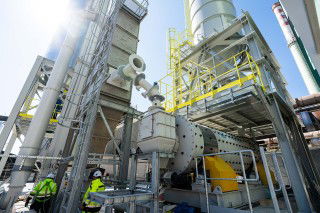This week the Indonesian Cement Association (ASI) announced that it has asked the country's government for a moratorium on issuing construction permits for new plants for the next five years. The association believes this will help reduce the overcapacity in the market, which it currently estimates at 25Mta.
It's clear that the high level of capacity additions in recent years have driven up capacity levels significantly beyond the current demand of 68-69Mt. As a result, PT Semen Indonesia estimates utilisation levels were at around 66 per cent in 2019, which is not as high as the company would ideally like.
Indeed, concerns over the surplus, and the resulting weakening of prices over the last three years, may have played a role in prompting LafargeHolcim to exit the market last year.
In the short-term, further capacity is scheduled to come onstream, including the 2.1Mta Gajah Tunggal "Grobogan" plant in Semarang due to be commissioned soon, plus a 3Mta plant belonging to Hongshi Holding Group (China), which is expected to be completed in 2021.
However, the call for a moratorium on new plant permits may present an overly-pessimistic view of the market.
Indonesia's cement demand is expected to make significant gains over the coming five years. Per capita consumption stands at just 251kg, low for the region and below the level expected of a rapidly-emerging economy with a rising population, massive infrastructure needs and a housing backlog of some 11m units.
Looking ahead, Indonesia's cement market should grow at least in line with its 10-year CAGR of 5.9 per cent, which will see demand climb by almost 25Mt over the coming five years, wiping out the current surplus.
In the meantime, Indonesia's producers have quickly organised themselves to ramp up exports, which reached 5.71Mt in 2018, and have performed even more strongly in 2019. These activities, together with a ban on imports, have helped to raise utilisation rates.
Outlook
As the Indonesian cement sector moves further through the supply-demand cycle, these exports will ultimately need to be scaled back as the industry returns to serving the domestic market. Pricing will also stabilise, helped by the increasing level of consolidation in the market.
The association is right to be concerned by the current supply-demand balance and there may be a well-intentioned attempt to deter some of the many new projects that have been announced in recent months. However, in the medium-term, Indonesia can look forward to a bright future as its growing cement industry continues to develop this emerging nation.
